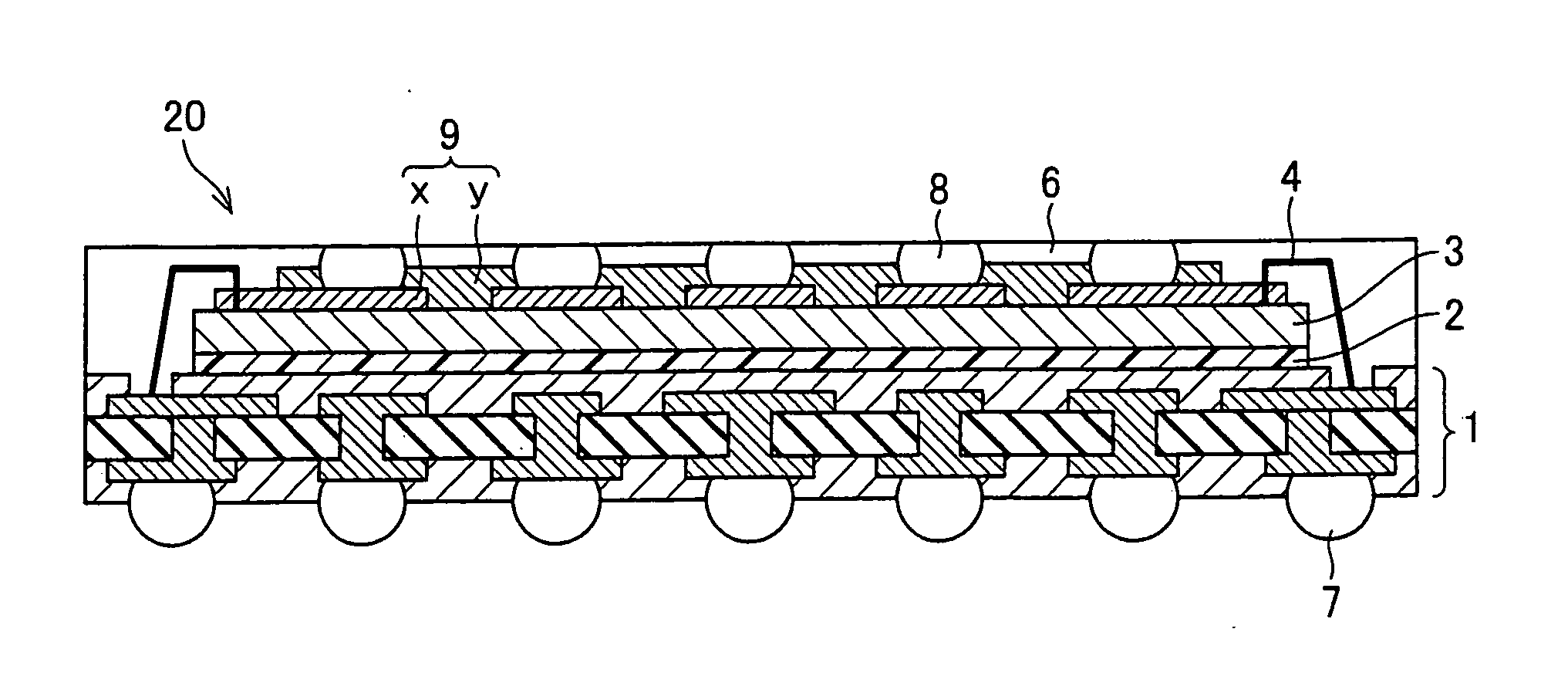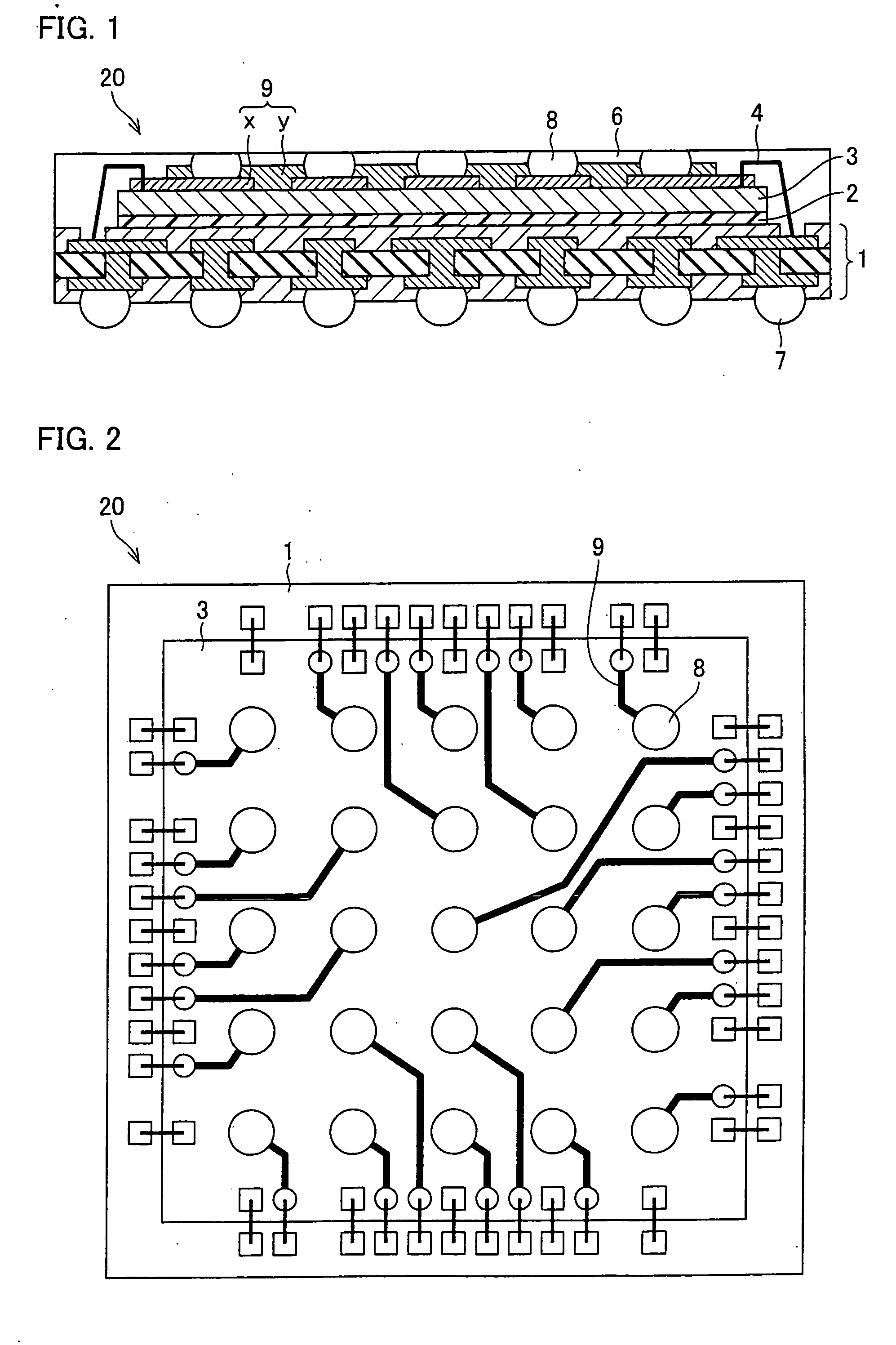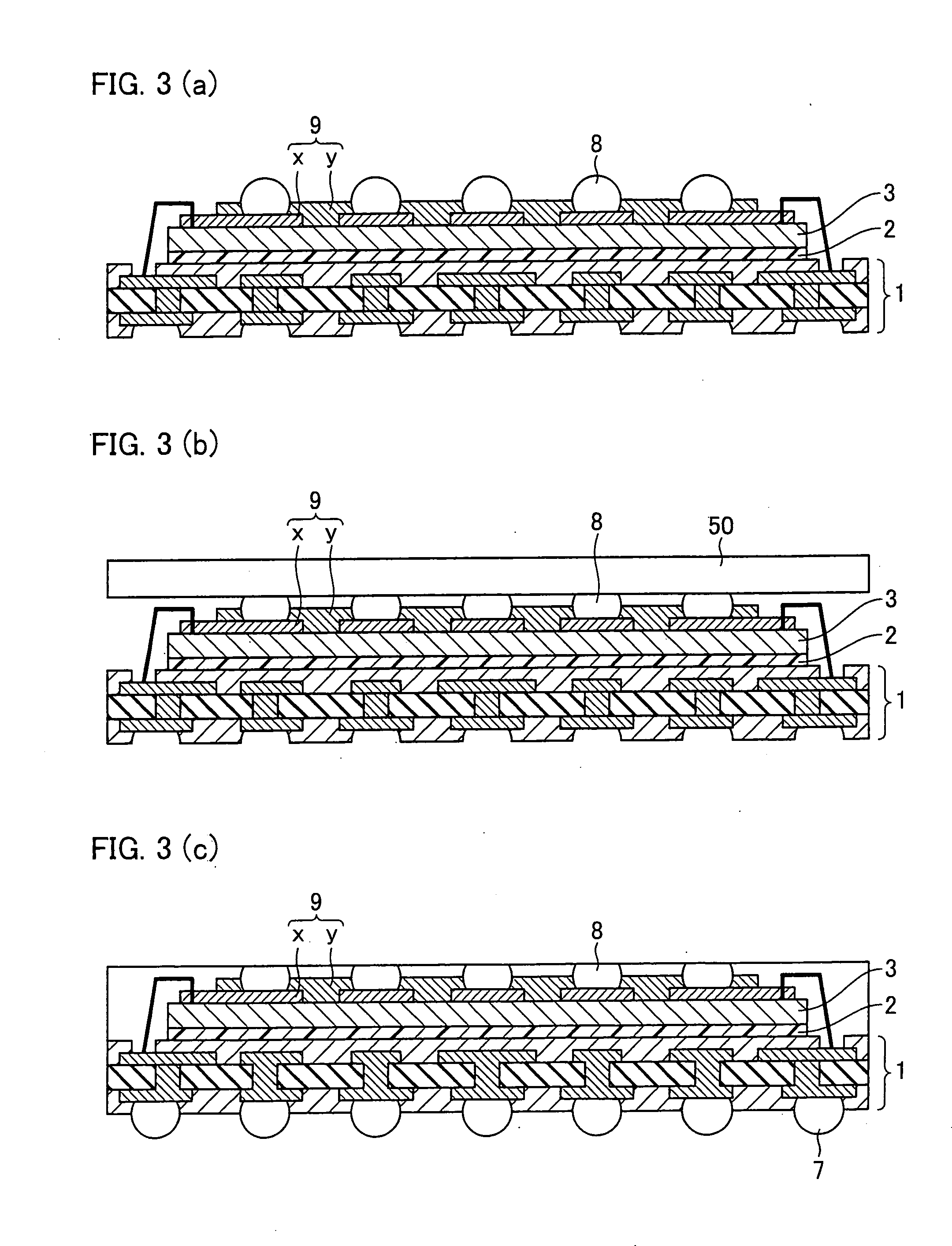Semiconductor device, stacked semiconductor device, and manufacturing method for semiconductor device
- Summary
- Abstract
- Description
- Claims
- Application Information
AI Technical Summary
Benefits of technology
Problems solved by technology
Method used
Image
Examples
example 1
ALTERNATIVE EXAMPLE 1
[0061]FIG. 4 is a cross sectional view illustrating a configuration of a semiconductor device 20a of Alternative Example 1. As illustrated in FIG. 4, a semiconductor chip 3 in the semiconductor device 20a is connected to a base substrate 1 by a flip-chip bonding using a bump 10, instead of connecting the semiconductor chip 3 and the base substrate 1 via a wire 4.
[0062] The semiconductor device 20a has the same configuration as that of the foregoing semiconductor device 20, except for the above described point.
[0063] As described, the flip-chip bonding technique is used in the semiconductor device 20a of the present alternative example, so that the semiconductor chip 3 is mounted on the base substrate 1 at a higher density.
[0064] A method for manufacturing this semiconductor device 20a is the same as the foregoing manufacturing method for the semiconductor device 20, except in that a flip-chip bonding is carried out for connecting the semiconductor chip 3 with...
example 2
ALTERNATIVE EXAMPLE 2
[0065]FIG. 5 is a cross sectional view illustrating a configuration of a semiconductor device 20b of Alternative Example 2. In the foregoing semiconductor devices 20 and 20a, the wiring layer 9 is directly formed on the semiconductor chip 3. However, in the semiconductor device 20b, a wiring layer 9 is formed on a supporting member 11. This wiring layer 9 on the supporting member 11 is mounted on an adhesive layer 12 which is provided on a semiconductor chip 3. As described, the wiring layer 9 is formed on the supporting member 11, and the wiring layer 9 on the supporting member 11 is mounted on the adhesive layer 12 on the semiconductor chip 3. With this configuration, a stress applied to the semiconductor chip 3 is reduced by the supporting member 11 and the adhesive layer 12. Thus, damage to the semiconductor chip 3 is reduced. The supporting member 11 and the adhesive layer 12 are insulative members. By adopting, for these members, a material whose elasticit...
example 3
ALTERNATIVE EXAMPLE 3
[0070]FIG. 6 is a cross sectional view illustrating a configuration of a semiconductor device 20c of Alternative Example 3. The configuration of the semiconductor device 20c is substantially the same as the semiconductor device 20b of Alternative Example 2. However, as illustrated in FIG. 6, the configuration of the semiconductor device 20c differs from the semiconductor device 20b in that a spacer layer 13 is provided on an adhesive layer 18 which is provided on a semiconductor chip 3.
[0071] With the provision of the spacer layer 13, a sufficient space for a wire 4 is acquired between the semiconductor chip 3 and an adhesive layer 12. Accordingly, in the semiconductor device 20c of the present alternative example, the wire 4 is not extended through the adhesive layer 12. This improves the reliability of the connection between the semiconductor chip 3 and the wire 4. Further, the supporting member 11 and the spacer layer 13 can be made of a heat conductive mate...
PUM
 Login to View More
Login to View More Abstract
Description
Claims
Application Information
 Login to View More
Login to View More - R&D
- Intellectual Property
- Life Sciences
- Materials
- Tech Scout
- Unparalleled Data Quality
- Higher Quality Content
- 60% Fewer Hallucinations
Browse by: Latest US Patents, China's latest patents, Technical Efficacy Thesaurus, Application Domain, Technology Topic, Popular Technical Reports.
© 2025 PatSnap. All rights reserved.Legal|Privacy policy|Modern Slavery Act Transparency Statement|Sitemap|About US| Contact US: help@patsnap.com



